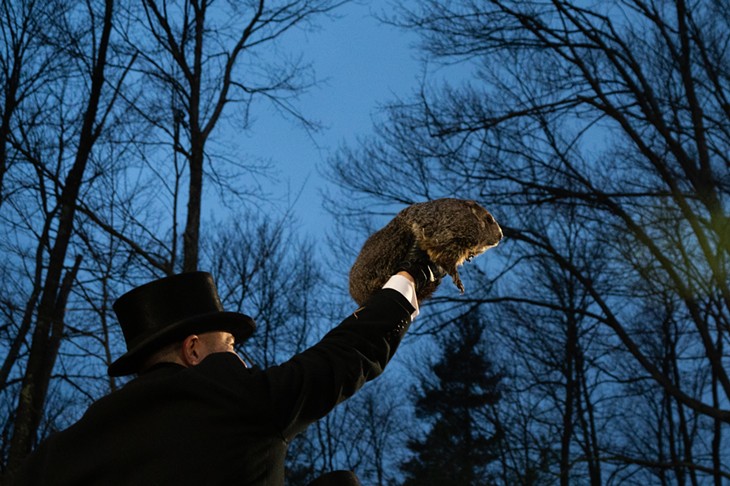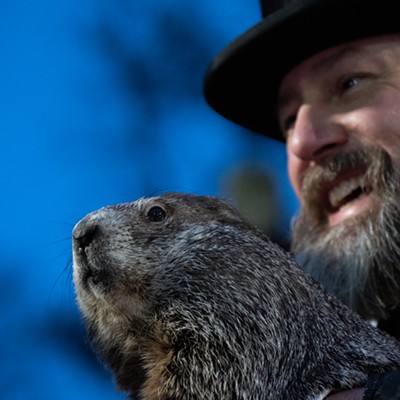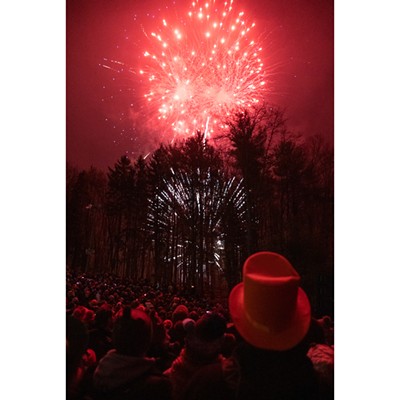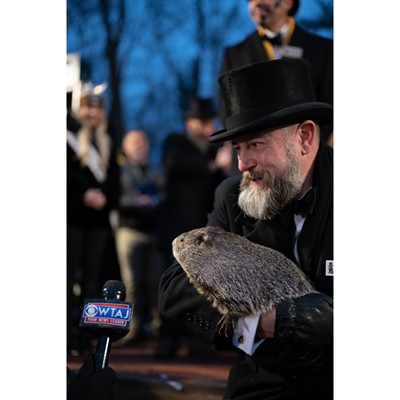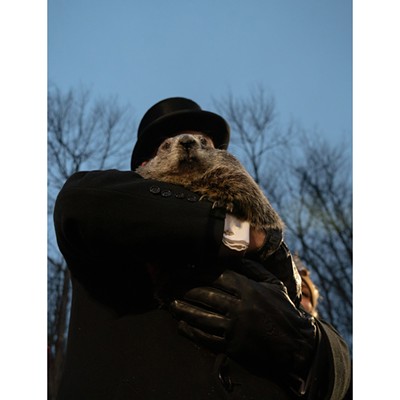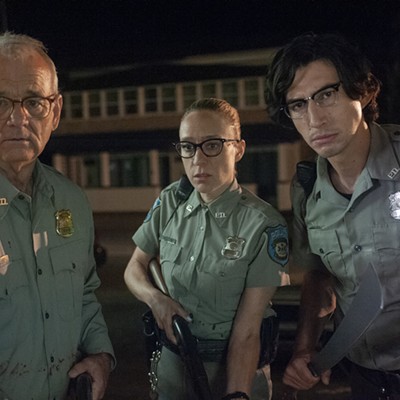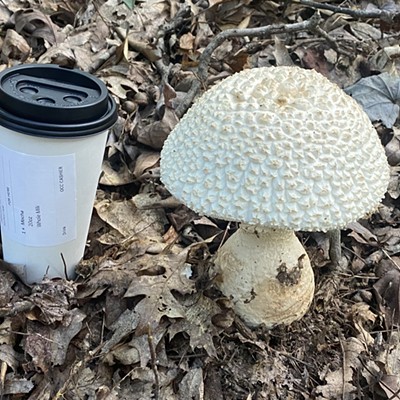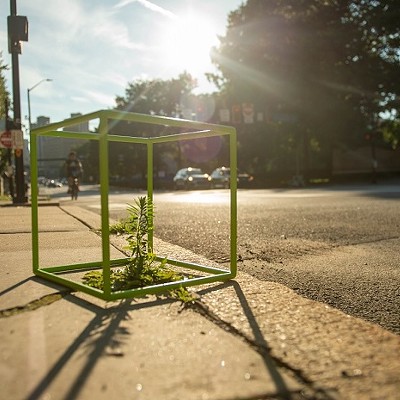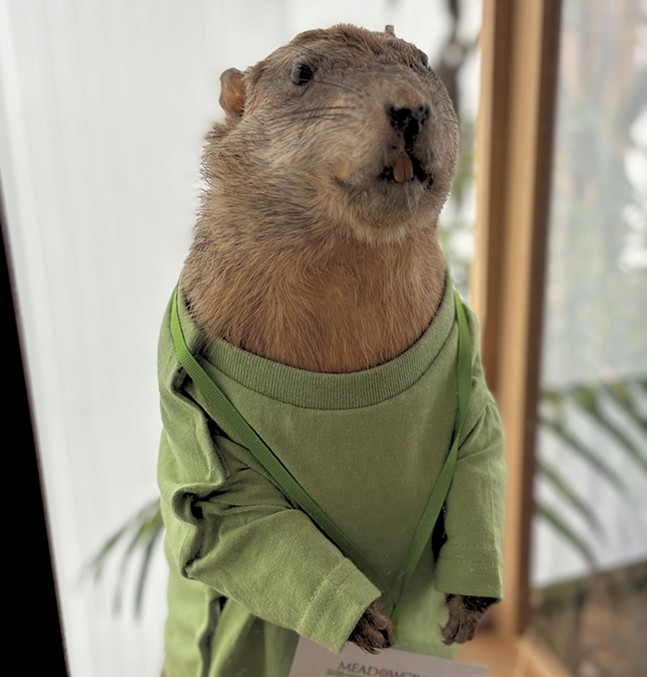
The farm-raised part of me understands the urge to turn these animals into dinner — growing up in central Pa., they were a nuisance, ripping up cropland and digging holes that threatened to break the legs of any passing horse or cow. Much of my youth was spent filling in, with loose rocks and dirt, any groundhog holes that emerged in the pasture, like some more humane, pre-teen version of Bill Murray’s groundskeeper character in Caddyshack.
Groundhogs were in Pennsylvania way before my family settled here, but they were quickly adopted as part of Pa. Dutch culture and life — the legend goes that either my great-grandfather or great-uncle could even get these rodents to respond to his whistles (groundhogs are alternately known as Whistle-Pigs because of the high-pitched calls they produce). German settlers practiced the tradition of using animals to predict the weather at the midway point between the spring equinox and winter solstice — known as Imbolc by pagans and Candlemas by Christians — and American groundhogs replaced the formerly preferred European badger.
On Feb. 2, those in Pittsburgh need only to make the 90-minute drive to the small town of Punxsutawney to witness this firsthand. The animal signifies the state’s past, present, and, due to its supposed abilities, future, and that extends to western Pa.
When I refer to the state’s past, in this case, I mean the distant past. Just 30 miles outside of Pittsburgh in Washington County, visitors can experience the Meadowcroft Rockshelter, a major archaeological find. The sandstone cliff overhangs a site containing what experts believe to be prehistoric artifacts left by people traveling through the area 19,000 years ago — University of Pittsburgh researchers who excavated the site in the 1970s determined that the discovery pre-dated the Clovis people who, for decades, were considered the first human presence in the Americas.
The incredible site may never have been found if not for the intervention of a groundhog. The story goes that, in 1955, Albert Miller, a farmer whose family had long owned the land on which Meadowcroft sits, found a freshly dug groundhog burrow containing projectile stone points, shell fragments, and other telling materials.
Meadwocroft even has its own designated Groundhog Day on Nov. 12 to honor the date Miller discovered the burrow.
Anyone visiting the Meadowcroft Rockshelter will find an interesting tribute to the site’s original excavator in Rocky, a taxidermied groundhog specimen located in the visitor center. David Scofield, director of the Meadowcroft Rockshelter and Historic Village, says that, at one time, Rocky held a replica of what’s called the “Miller Point,” a spear point found at the site believed to be the oldest artifact found in North America.
“We had a copy of that tucked in his little hand, but it didn’t stay very long,” Scofield tells Pittsburgh City Paper with a laugh.
While news outlets all over the world report on Groundhog Day, it remains a distinctly Pennsylvania holiday (a 2022 Library of Congress article titled “Groundhog Day: Ancient Origins of a Modern Celebration” cites 1887 as the first recorded visit to Gobbler’s Knob), despite other places creating their versions of Phil. Every year, several American and Canadian cities parade out their imposter rodents, including Buckeye Chuck in Marion, Ohio.
(I will digress here to remember Quebec’s Fred la Marmotte, who tragically passed away on Feb. 2, 2023, mere hours before making his annual appearance. According to the Montreal Gazette, one organizer said, “He was at least 14 years old; that’s pretty old for a groundhog.” A child “was called in as an emergency replacement” and, using a stuffed toy groundhog, predicted that winter would continue for another six weeks. Repose en paix, old Fred.)
As time goes on, and climate change increasingly disturbs weather patterns, Phil’s role feels comfortingly quaint. If only we could depend on a big, toothy rat to predict the once-reliable seasons, as opposed to buckling in, year after year, for whatever roiling mess manmade pollution has in store for us.
A new book addresses this head-on by using Phil to teach young readers about the effects of climate change.
Co-written by Rob Long and Andrew Dolberg, The Great Weather Diviner: The Untold Origin of Punxsutawney Phil adds a YA fantasy spin to the famed groundhog, portraying him as a young, magical, anthropomorphic figure who, according to a press release, bands with a group of “legendary superpowered animals” to “save his town, uncover the mysteries of his powers, and discover the truth about his family’s history and their role in the balance of nature.”
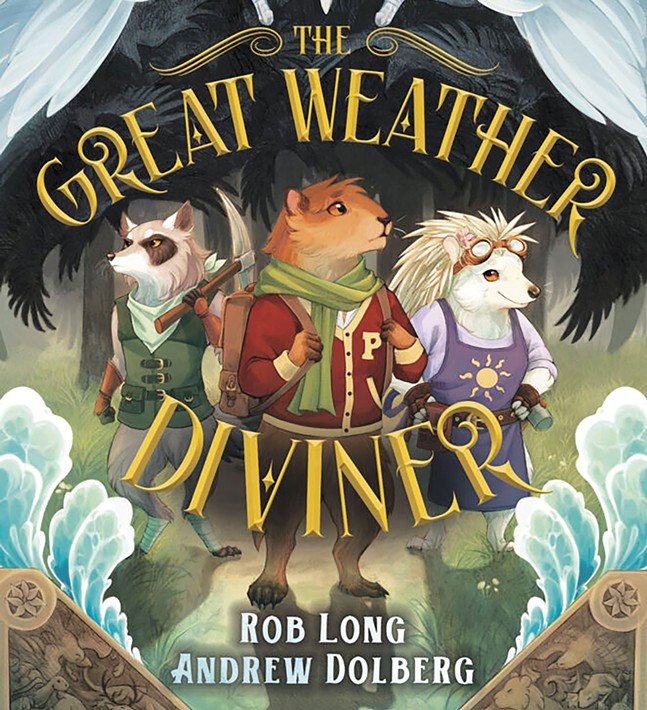
“Weather predictions aren’t fun anymore; they’re kind of scary,” Long tells City Paper. “In a way, I think we do have to reinvent what Punxsutawney Phil means.”
He and Dolberg wrote the book for a middle-school audience who, Long says, “might be the last generation that can really do something [about climate change] before we’re at the point of no return.”
“Frankly, getting kids engaged with this issue in a fun way … we don’t want to scare them, but, the real thing is, kids already know about climate change,” he says. “They’re already well aware of it, and a lot of them are feeling a lot of distress over it, and a lot of them have a lot of resentment that they inherited this from generations before them, and now they have this problem. And that’s very much reflected in the book.”
Ultimately, Long says they wanted the book to feel “relatable” to young readers and validate their concerns.
The Great Weather Diviner kicks off a series of four books (one for each season, as Long points out), as well as a spin-off children’s book that follows a flamingo named Hugo who searches for his family in the endangered Florida Everglades.
While the book takes Phil beyond Gobbler’s Knob, Long believes the creature’s humble celebration still holds significance, and plans on visiting his hometown for the upcoming Groundhog Day. He sees the holiday as a reminder of how Phil has, and always will, represent sustainability, as previous generations used the groundhog as a way to “survive as a society” by working with the flow of nature.
“And I think tying that message into Groundhog Day is a good thing — a message of hope, a message of resilience,” he says.

